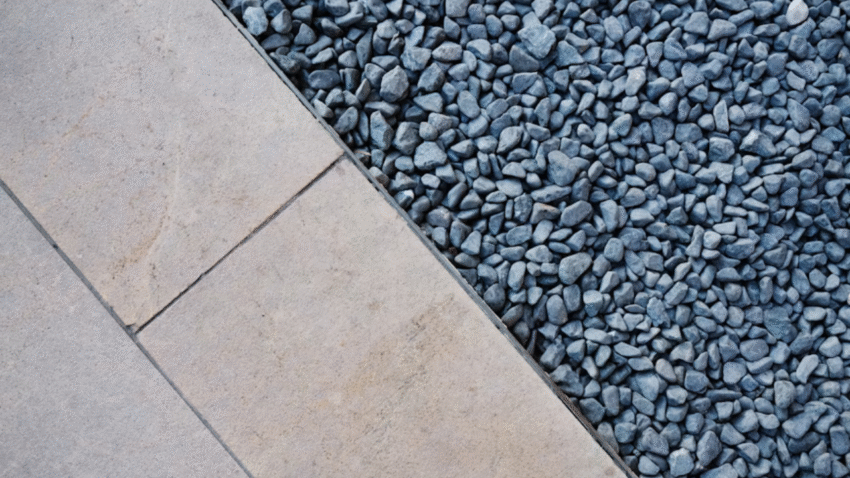Introduction
If your outdoor space looks dull or stained, learning how to pressure wash a patio safely is the quickest way to bring it back to life. Dirt, moss, mildew, and grime build up over time, making concrete, pavers, and wooden decks look worn and uninviting. While pressure washers can blast away years of buildup in minutes, using one incorrectly can damage surfaces, strip finishes, or even cause injuries. This guide shows you how to pressure wash your patio properly, so you get sparkling results without the risks.
Why Safe Pressure Washing Matters
Pressure washing isn’t just about curb appeal—it’s about maintenance and longevity. Done correctly, it:
- Restores Beauty: Removes stains, moss, and dirt for a fresh, clean look.
- Prevents Damage: Stops mold and mildew from breaking down wood, pavers, or grout.
- Improves Safety: Eliminates slippery algae and grime that cause falls.
- Prepares Surfaces: Cleans patios before sealing, staining, or painting.
But misuse can cause problems: gouging wood, loosening pavers, or driving water into cracks where it can freeze and expand. That’s why following safe techniques is critical.
Step-by-Step Guide to Pressure Washing a Patio
1. Choose the Right Pressure Washer
- Electric (1,300–2,000 PSI): Best for small patios and lighter cleaning.
- Gas (2,500–3,500 PSI): Stronger, suitable for larger or heavily stained areas.
Tip: Never exceed the recommended PSI for your patio material.
2. Select the Correct Nozzle
Pressure washer nozzles are color-coded by spray angle:
- Green (25°): General cleaning for most surfaces.
- White (40°): Gentle rinse for wood or soft stone.
- Yellow (15°): Stubborn stains on durable concrete or brick.
- Red (0°): Avoid for patios—it’s too harsh and can cause damage.
3. Clear and Protect the Area
Remove furniture, planters, and decor from the patio. Cover nearby plants, doors, and windows with plastic sheeting or tarps to protect them from overspray and cleaning chemicals.
4. Sweep and Pre-Treat Stains
Sweep away loose debris like leaves, dirt, or gravel. For oil, rust, or mildew, apply a specialized patio cleaner or degreaser and let it sit for 10–15 minutes before washing.
5. Test a Small Area
Before tackling the whole patio, test the washer on a small corner. This ensures your chosen pressure and nozzle won’t etch or damage the surface.
6. Start Washing at a Safe Distance
Hold the spray wand about 12–18 inches from the patio surface. Begin at the far corner and work backward toward an exit. Keep the wand moving in smooth, overlapping passes to prevent streaks or gouges.
7. Adjust Technique for Different Materials
- Concrete: Can handle higher PSI (2,500–3,000). Use a 25° or 15° nozzle for stains.
- Pavers: Use medium PSI (1,800–2,200) and avoid blasting joints—too much pressure can dislodge sand.
- Wood Decking: Stay under 1,500 PSI with a 40° nozzle to prevent splintering. Keep the wand at least 18 inches away.
- Tiles/Stone: Use lower PSI and a wide spray to avoid chipping or cracking.
8. Rinse Thoroughly
Once cleaned, rinse the entire patio with fresh water to wash away detergent, loosened dirt, and debris. Start at the highest point and work your way down.
9. Refill Paver Joints (if needed)
If joint sand between pavers washes out, sweep polymeric sand into the gaps. Mist lightly with water to activate binding agents and lock pavers back into place.
10. Let the Patio Dry
Allow the patio to dry fully before replacing furniture or applying sealant. Depending on weather, drying may take several hours to a full day.
Common Mistakes to Avoid
- Mistake: Using Too Much Pressure
High PSI gouges wood or etches concrete.
Solution: Match PSI and nozzle to your surface type. - Mistake: Holding the Wand Too Close
Spraying too close creates lines, streaks, or damage.
Solution: Maintain 12–18 inches of distance. - Mistake: Skipping Pre-Treatment
Pressure washing alone won’t always remove stains.
Solution: Apply cleaners first for oil, rust, or mildew. - Mistake: Not Protecting Plants or Surfaces
Chemicals and overspray can damage landscaping.
Solution: Cover plants, siding, and windows with tarps. - Mistake: Blasting Paver Joints
Too much pressure washes out sand and destabilizes pavers.
Solution: Spray at an angle and lower PSI around joints.
Extra Patio & Deck Tips & Hacks
- Use a surface cleaner attachment for large patios—it keeps pressure even and speeds up the job.
- Wear protective gear: safety glasses, gloves, and non-slip shoes.
- After washing, apply a sealer to concrete, pavers, or wood to keep surfaces clean longer.
- Pressure wash at least once a year—spring or early summer is ideal to remove winter buildup.
Looking for long-term patio care? See our guide on how to seal a patio for maximum protection.
Conclusion
Learning how to pressure wash a patio safely is the key to restoring its beauty and extending its lifespan. By choosing the right equipment, adjusting your technique for each material, and avoiding common mistakes, you’ll achieve professional-quality results without costly damage.
Pro tip: Always test your washer in a hidden spot first—once you see how powerful it is, you’ll know the safest settings for the whole patio. Bookmark this guide to keep your outdoor space clean, safe, and inviting year-round.
